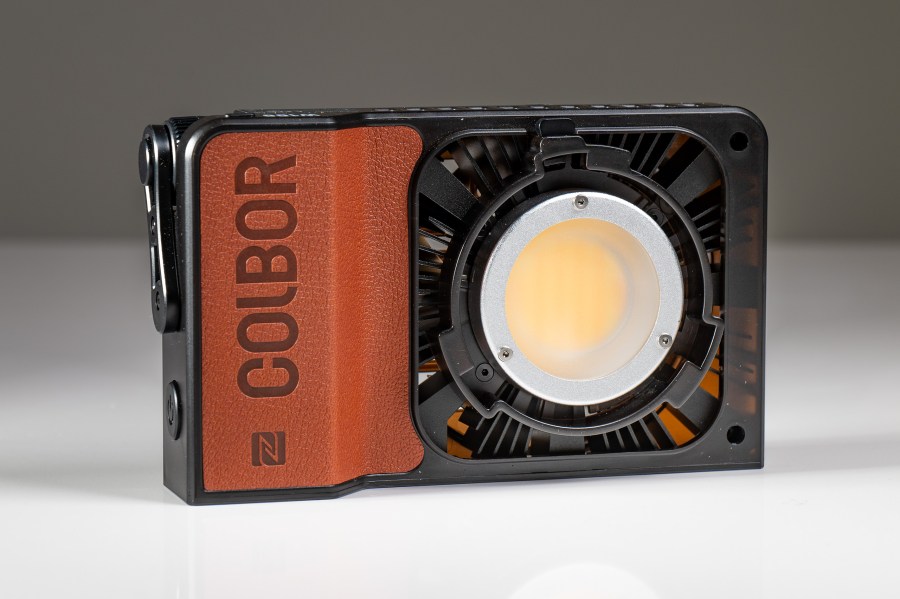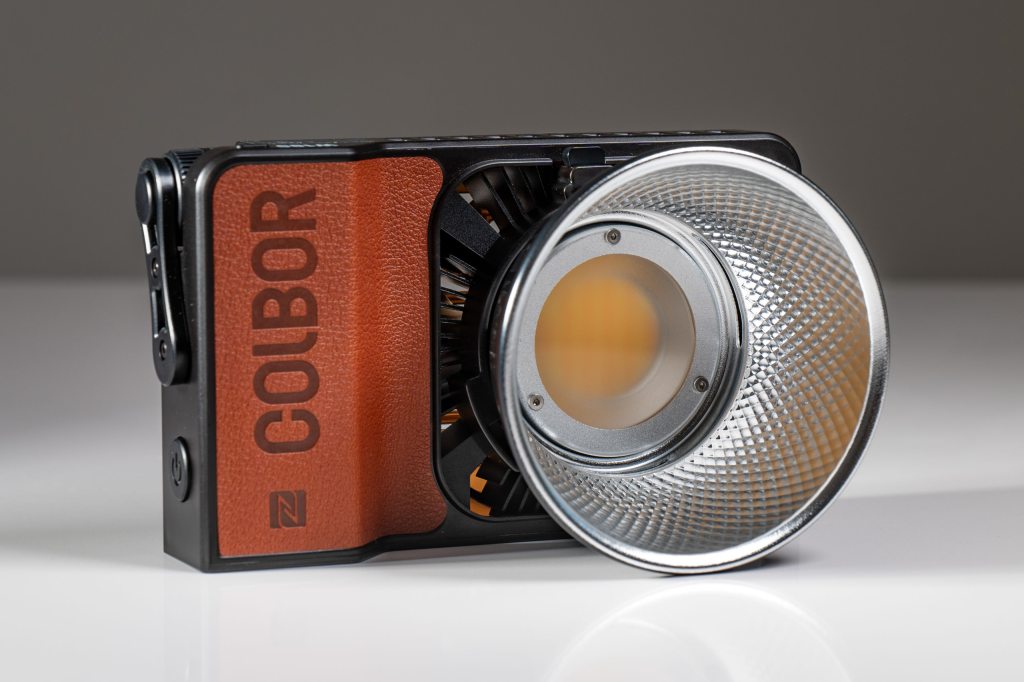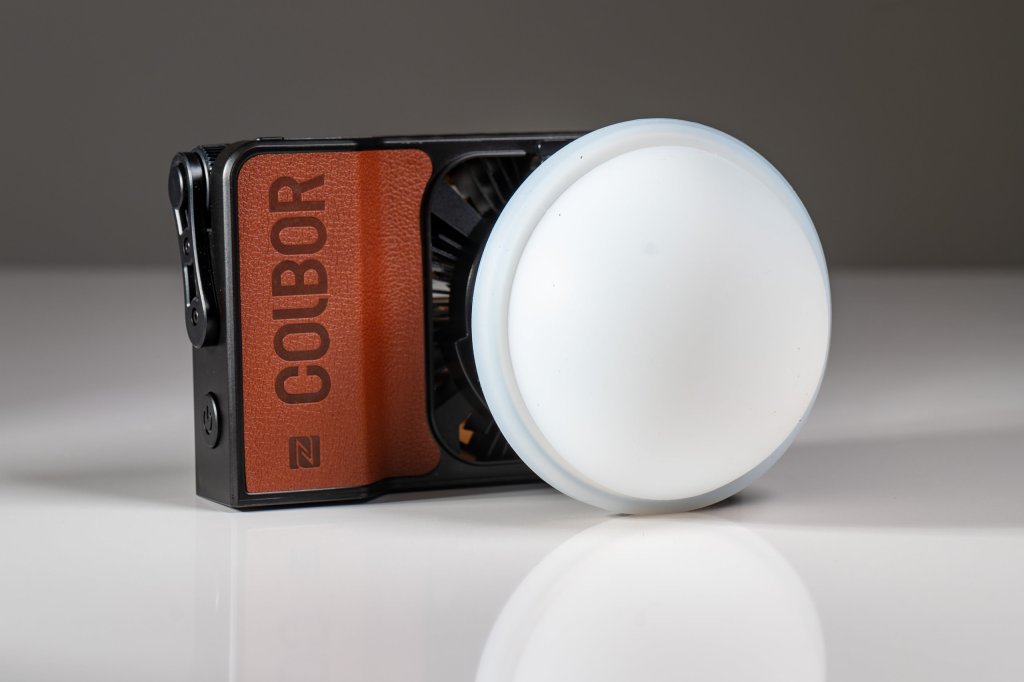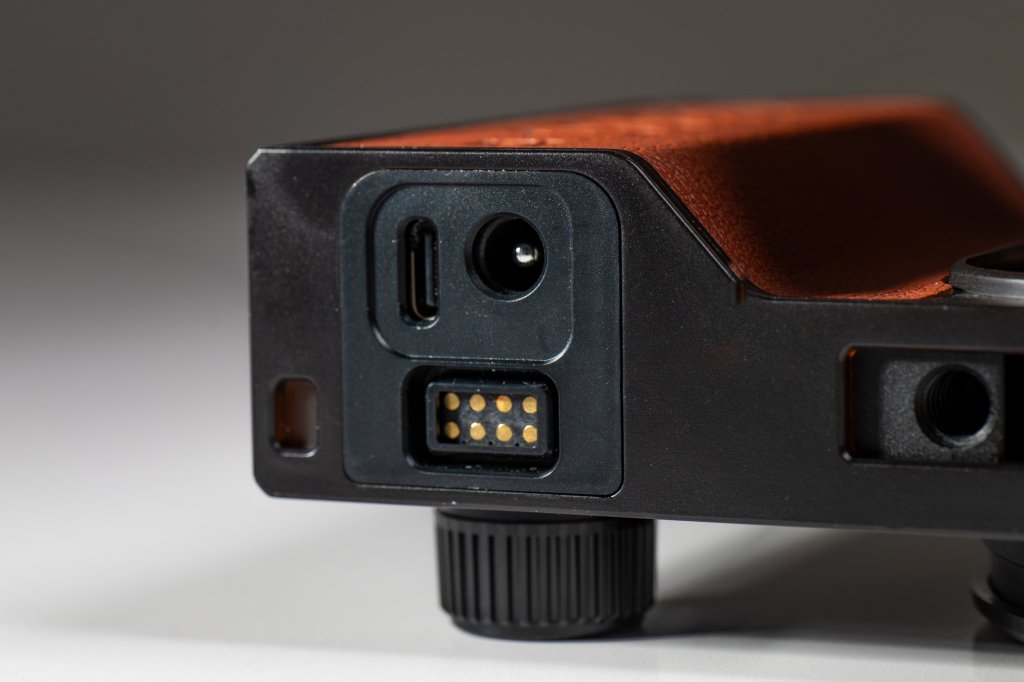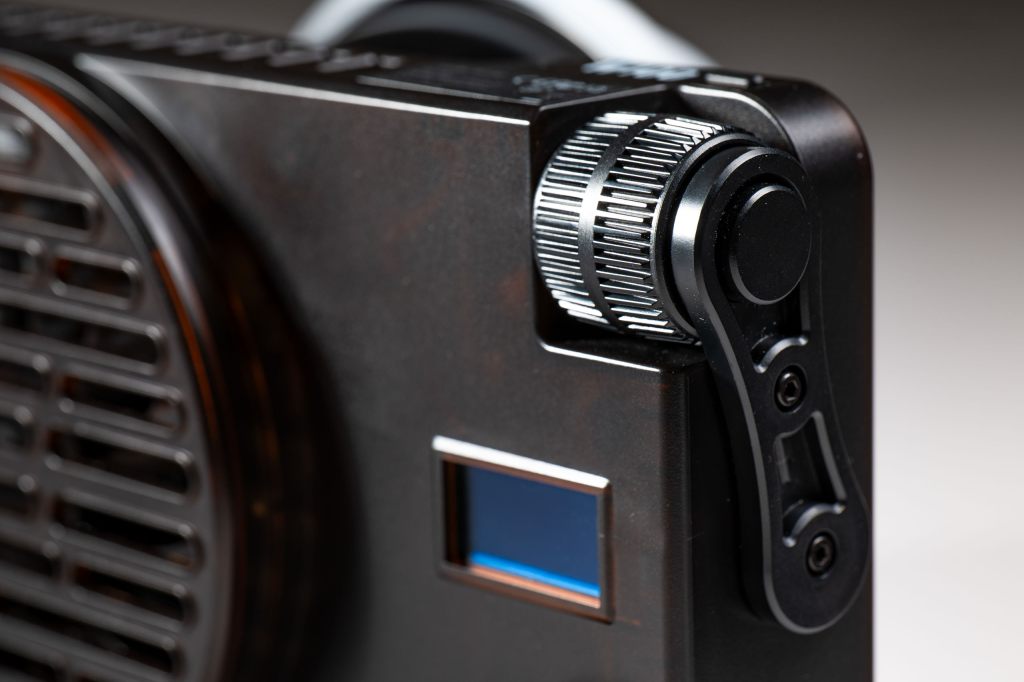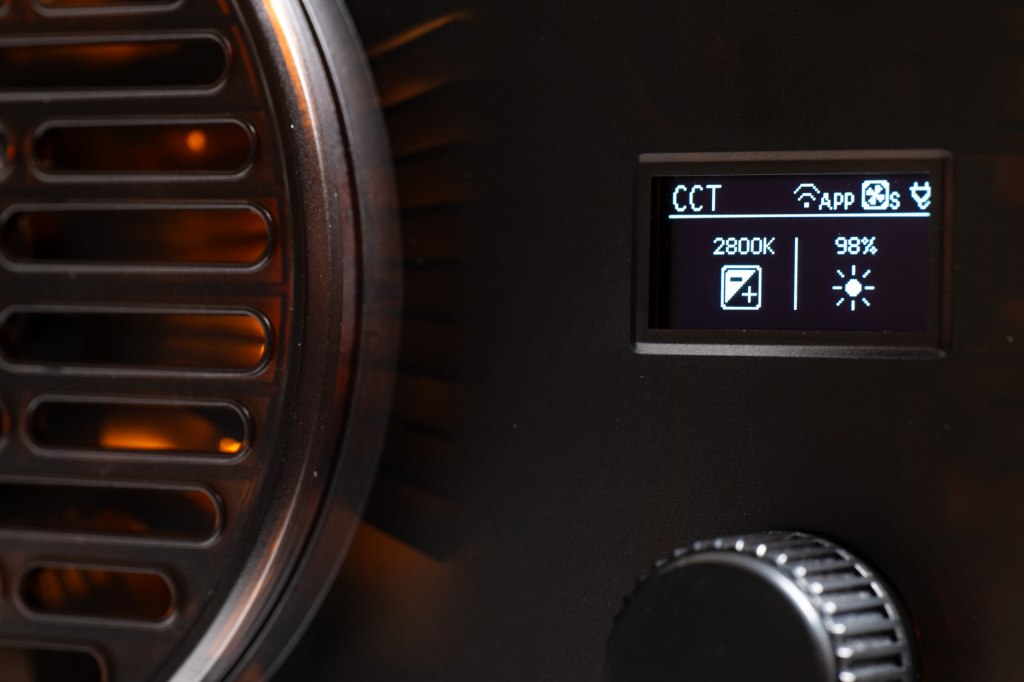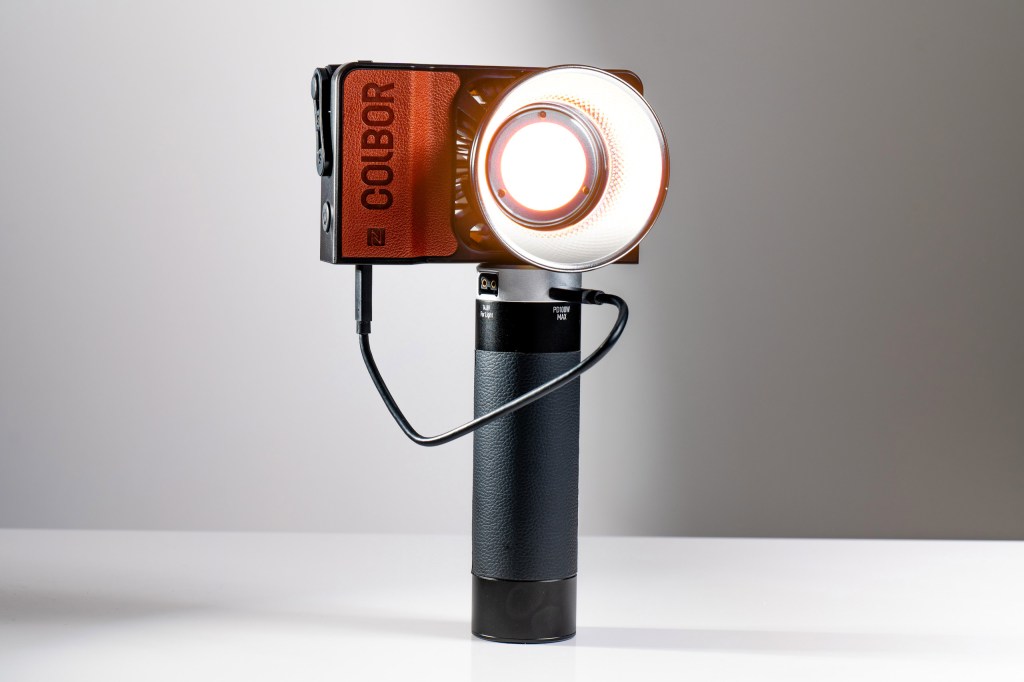Amateur Photographer verdict
Remarkably bright for its size and it does what it is supposed to do very well.- Very small powerful light
- Lightweight
- Low cost
- Offers battery power
- A bit plasticy
- Needs the app for extra controls
Colbor W100 at a glance:
- $169 / £169
- £99 for PG99 battery grip
- Bi-colour LED light, 2700-6500K
- 100W output
- Gives f/5.6 at 2m at 1/60th and ISO 400
- 157x43x93mm and 345g
- colborlight.com
Colbor’s latest creation in the LED lighting market is the Colbor W100 series of tiny, portable, units what pack far more power than you’d expect for their size. The W series comprises four options, the bi-colour W100 which is on test here, the W100R which offers RGB LEDs and the W60/W60R which are lower powered alternatives to the Colbor W100 models. What’s most remarkable about these lights is that they are only just slightly larger than an average camera, but they pack the punch of a full-sized studio light. As they are so small they slip into a camera bag almost unnoticed and as their plastic bodies are so light it’s only like having an extra 300ml bottle of water in your bag. They can also be tucked away out of sight in small spaces and used to light small rooms in which a full-sized light might take up too much room.
The lights come with equally small accessories too, so their light can be fully modified, and for true portability they can run on battery as well as mains power.
Colbor W100 – Features
- Power: The light can run from the mains or from a battery via a D-Tap or USB connection.
- Grip: Colbor makes a PG99 battery grip that’s ideal for holding and powering the light.
- Modifiers: The W100 comes with a dish and a soft dome and is compatible with a softbox. A Bowens mount adapter is also available.
- Controls: Physical controls on the body are paired with digital controls in the Colbor Studio app.
The Colbor W100 on test here is a bi-colour LED light that offers 100W of output, and colour temperatures between 2700-6500K – so a range that takes in yellower-than-tungsten light and bluer-than-daylight. The 100W output offers us a maximum brightness of 7020 lux at 1m according to Colbor, but to get that we need to fit the supplied 3.5in reflector and turn the colour temperature to 6500K. At the 5500K daylight setting we should get 6790 lux.
While the W100R RGB version might offer pretty colours it doesn’t give us as much brightness as this bi-colour model – offering 6500 lux at the 5500K setting. As with the Colbor CL220R we reviewed previously, the RGB colours manage only an average of half the output of the ‘white’ LEDs, so if you value brightness over colours this straight W100 is the better option. Even so, the power of the output varies across the colour temperature range, and we get much less from the tungsten settings than we do the daylight temperatures.
The light is powered via the mains cable that comes in the box, but we can also power it via USB-C PB fast charging source. A neater option is Colbor’s own PG99 power grip which incorporates a 6600mAh capacity and which can deliver a remarkable 14.8V to allow the light to burn at full brightness. It comes with a D-Tap cable to connect with the light, a screw to attach itself to the base of the light, and a pair of threads below so it can be mounted on a tripod or light stand. It’s very impressive, and delivers more voltage than most V-Lock batteries.
At 605g, full or empty, it is twice the weight of the light itself, but it is a very handy accessory. More regular V-Lock batteries also do the job very well, and as many now also have USB-out ports we have a choice of options and a great deal more capacity. The lightweight characteristics of the light though lend themselves most obviously to the PG99 power-grip.

Colbor W100 – Build and Handling
I may have mentioned before that this is a very small and lightweight light for the power it offers. I’m not sure if the weight is a factor of the materials used, or the materials used are aimed at keeping the weight down, but either way the body feels very plastic and not very rugged. It certainly doesn’t feel like a tough bit of kit, but perhaps it doesn’t need to be and perhaps we’d rather it that way if it means the price stays low.
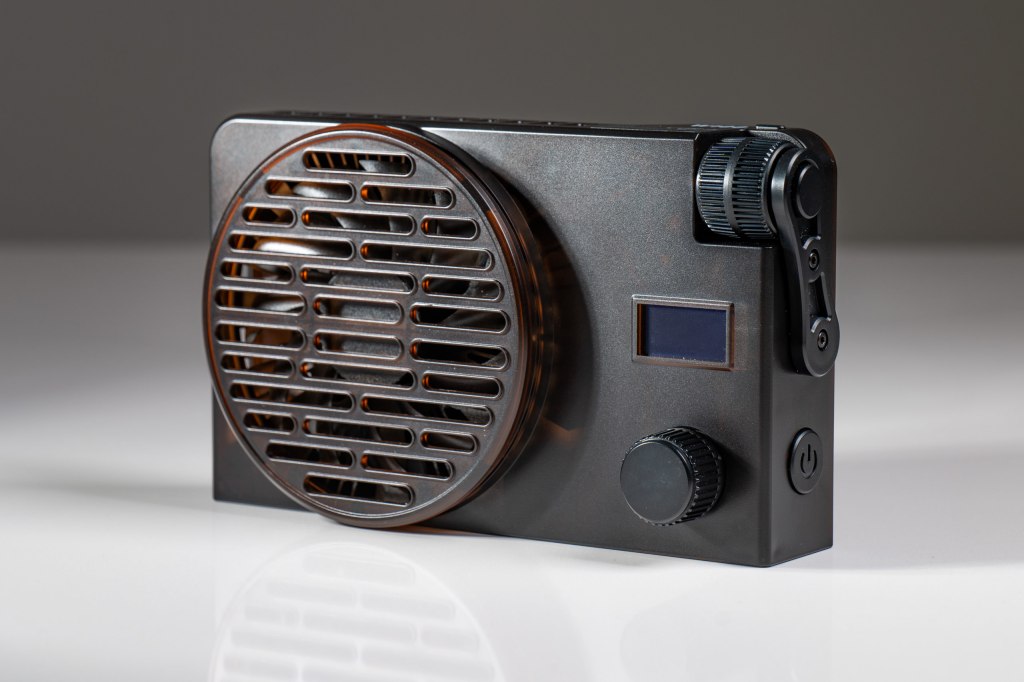
Over half the volume of the unit is occupied by a fan that works constantly to keep the light cool, and we have a neat little finger grip, that makes the unit look a bit like a camera, for those holding it by hand. In the base we have two mounting points, both 1/4in 20, for attaching it to light stands, tripods and the power grip.
There are a few controls to contend with on the body itself. We have a dial for colour temperature and a roller for brightness, an on/off button and another for the wireless connection modes. Colour temperature is adjusted in 100K steps when we turn the rear dial, but it can be made to jump between five popular settings when we press the dial instead of turning it. The roller that controls brightness does so in 1% steps, and again those with less patience can jump in 25% steps with a press of a button on the end of the roller. Around that button we have a fancy-looking retaining clasp that appears to be just for decoration, but it does look quite nice.
A long press of the wireless connections button sets the W100 into pairing mode, so we can connect to the Colbor Studio app. The app adds not only remote control but also a number of features not accessible in the light’s own menu – such as a flicker-box feature that makes the light flash like lightning or flicker like an open fire, and we can quickly switch colour temperatures to match standard sources. The app connects very quickly, and I’ve found it very reliable.
There’s a display on the rear of the light that keeps us informed of what settings we are using. It’s very small but simple, easy enough to read, and does its job without complications – and the text isn’t so small you’ll need to switch glasses to read it.
Around the LED panel itself we have a small mount that takes the included reflector and its diffusion dome. This can also take a limited series of miniature softbox and lantern modifiers, or an adapter to make it compatible with full-sized Bowens accessories.
Colbor W100 – Performance
I’ve been very impressed with the performance of this light, and have been surprised by its brightness almost every time I’ve switched it on. It is just as bright as the Colbor CL220R we tested before, but the form factor is dramatically smaller even than that small light. The dials make it quite an effort to get from one end of the brightness/temperature range to the other, so you will want to familiarise yourself with the press-button effects.
As expected I found the light less powerful in the lower temperature range than the settings around daylight, but at a distance of 2m we should expect f/5.6 at 1/60sec and ISO 400. If you hold the light close to your subject on a bright sunny day you will be able to fill shadows, but it is at its best when used inside. The soft dome is nicely effective at making the light more attractive, but it costs us about a stop and a half while doing so. It also seems to add a bit of warmth to the output, so you’ll need to adjust your white balance or the dialled-in temperature at the light’s control panel – but it is well worth using.
A really nice touch is that we can still get full power from the Colbor W100 when it’s running from a battery – which is something you can’t do so easily with the CL220R. The PG99 offers up to 14.8V like a regular V-Lock battery, so either option will give us 100% output – which is really great, and makes the light truly portable. In this area the W100 beats the larger CL220R studio light, as that only runs at 50% when powered by the same battery.
The fan whir is something of a permanent feature of this light, and while it isn’t especially loud it does rather preclude using the light close to the camera if you are recording sound. Stills photographers won’t be bothered by it at all of course, and its existence means the light can run for a very long time without over-heating.
Colbor W100 – Verdict
As much as this is a low-cost light that’s made of plastic, it is also remarkably bright for its size and it does what it is supposed to do very well. It can be mounted on a shelf, a stand, behind a sofa and be operated remotely from the app, and used in places a big light just won’t fit – and once it is in position there’s no way of telling the difference between the light it emits and the light we’d get from the light costing three times as much. The modifier dish and soft dome that come with it work well, but the Bowens mount adapter open us up to much larger softboxes, snoots and dishes. I love that it can be powered by batteries too, as that makes it truly portable and the sort of light we can pull out of the bag when we didn’t expect to need one. And if you are tempted by the RBG version it only costs £30 more.

Colbor W100 – Full Specifications
| CRI/TLCI | 97/99 |
| Colour temp | 2700-6500K |
| Beam angle approx. | 120° |
| Output power | 100W |
| Power | DC / USB-C |
| Dimensions | 157 x 43 x 93 mm |
| Weight | 345g |
| Manufacturer | Colbor |
| Price | £169 |
| £99 battery grip | |
| £199 with RGB version | |
Related reading:
- Essential Guide to Lighting and Studio Setup for Boudoir Photography
- Lighting tips for maternity photography
- Macro photography lighting tips
- Portrait lighting secrets: Tianna J Williams
Follow AP on Facebook, Twitter, Instagram, YouTube and TikTok.

